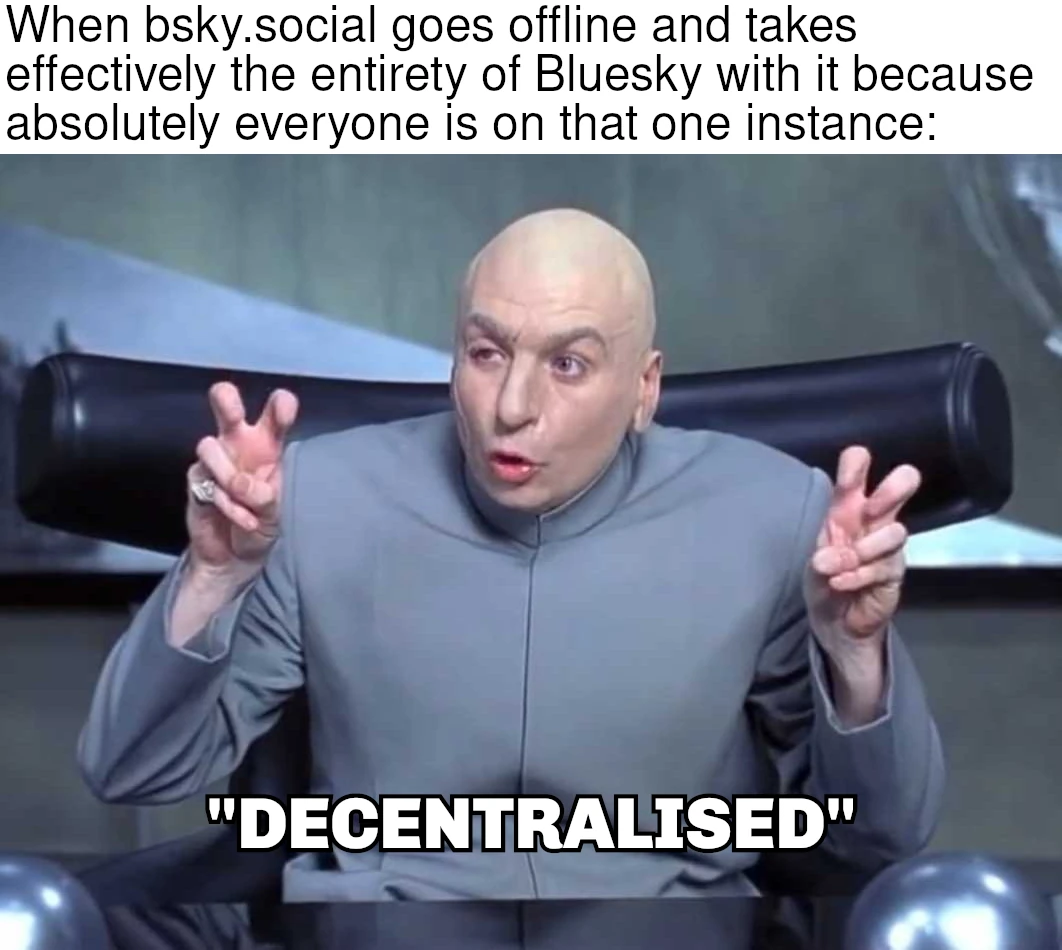I'm asking because it is really difficult to find a place for discussing accessibility in Fediverse posts beyond the limits of any one Fediverse server application.
I'm looking for something
- in the Fediverse
- with technology that supports discussions
- where users know the Fediverse beyond whatever software that particular place is running on
- where users know something about how and why to make Fediverse posts accessible for e.g. blind users
- where users take this topic seriously instead of seeing it as a gimmick
- where it's likely enough for someone to reply to posts
Mastodon takes accessibility very seriously. But Mastodon users never look beyond Mastodon. Every other Mastodon user doesn't even know that the Fediverse is more than only Mastodon. Most of those who do have no idea what the rest of the Fediverse is like, including what it can do that Mastodon can't, and what it can't do that Mastodon can. Many Mastodon users even reject the Fediverse outside Mastodon, and be it because it "refuses" to fully adopt Mastodon's culture and throw its own cultures overboard. This would include using features that Mastodon doesn't have. You're easily being muted or blocked upon first strike if you dare to post more than 500 characters at once.
I myself am mostly on Hubzilla. Not only is Hubzilla vastly more powerful than Mastodon, it is also vastly different, and being older than Mastodon as well, it had grown its own culture before Mastodon came along. Still, three out of four Mastodon users have never even heard of the existence of Hubzilla, and many who do are likely to think it's basically Mastodon with a higher character count, extra stuff glued on and a clunky UI.
If you try to discuss Fediverse accessibility on Mastodon, you end up only discussing Mastodon accessibility with exactly zero regards, understanding or interest for what the rest of the Fediverse is like.
Besides, Mastodon has no good support for conversations and no real concept of threads. It is impossible to follow a discussion thread or to even only know that there have been new replies without having been mentioned in these replies. Thus, any attempt at discussing something on Mastodon is futile.
Hubzilla itself is great for discussions. It even has had groups/forums as a feature from the very beginning. In practice, however, it has precious few forums. The same applies to (streams) even more.
Discussing Fediverse accessibility is completely futile on both. They don't "do accessibility". To their users, alt-text is some fad that was invented on Mastodon, and Hubzilla and (streams) don't do Mastodon crap, full stop. In fact, their users hate Mastodon with a passion for deliberately, intentionally being so limited and trying to push its own limitations, its proprietary, non-standard solutions and its culture upon the rest of the Fediverse. At the same time, they don't really know that much about Mastodon, and they aren't interested in it.
Most of this applies to Friendica as well, but Hubzilla and (streams) users sometimes go as far as disabling ActivityPub altogether to keep Mastodon and the other ActivityPub-based microblogging projects out, and they don't care if Friendica ends up collateral damage. They hate the non-nomadic majority of the Fediverse that much.
If you try to discuss Fediverse accessibility on Hubzilla, nobody would know what you're even talking about, and nobody would want to know because they take it for another stupid Mastodon fad. They probably don't even understand why I accept connection requests from Mastodon in the first place.
Here on Lemmy, I've seen a number of dedicated accessibility communities. But they seem to be only about accessibility on the greater Web and in real life and not a bit about accessibility in the Fediverse specifically. I'm not even sure if Lemmy itself "does accessibility" in any way. And I'm not sure how aware Lemmy is of the Fediverse beyond Lemmy, /kbin and Mastodon.
Besides, these communities aren't much more than the admin posting stuff and nobody ever replying. So I guess trying to actually discuss something there is completely useless. If I post a question, I'll probably never get a reply.
The reason why I'm asking here first is because this community is actually active enough for people to reply to posts. But I'm not sure if it's good for discussing super-specific details about making non-Threadiverse Fediverse posts accessible.









Don't make it a scratch-built, stand-alone Fediverse server app.
Make it a third-party add-on for Hubzilla or (streams) or Forte that sources the profiles of channels that activate that add-on. I mean, you've gotta see the number of profile fields available on these three.